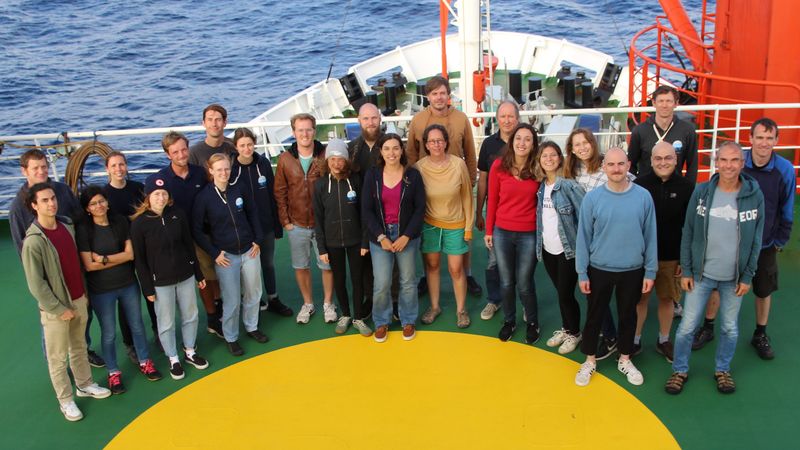Report from expedition M180 SONETT
A key part of the ocean observations in the second phase of TRR181 has been the M180 SONETT Expedition, which stands for Synoptic Observations - a Nested approach to study Energy Transfer & Turbulence in the ocean. The expedition has been recently completed amidst the pandemic on board RV METEOR in South Atlantic Ocean, witth the aim to observe multiple processes that afect energy fluxes in the ocean and the ocean’s exchange with the atmosphere.

TRR181 researchers from MARUM - Center for Marine and Environmental Sciences at the University of Bremen, the University of Bremen, the University of Hamburg, the Institute for Baltic Sea Research Warnemünde (IOW) and the Helmholtz Center Hereon participated in the expedition.
The working area for this expedition was the eastern South Atlantic Ocean, southeast of the Walvis Ridge, rife with internal tides and the so-called Agulhas eddies, which are formed at the southern tip of Africa and migrate northward through the Atlantic Ocean. In this region, these eddies interact with the internal tides generated at the Walvis Ridge, and afect the propagation and dissipation of internal tidal waves. Further, the eddies can also form fronts and so-called filaments at their edges, these processes occur at smaller scales referred to as the submesoscales. The observations included large to small scales and from the upper to the deeper ocean: the surface fluxes and waves, surface layer processes, mesoscale and submesoscale variability, horizontal mixing, internal wave energy fluxes, the interaction between internal waves and eddies, and the energy dissipation in the ocean interior.
To observe set of varied instruments were onboard RV METEOR to measure different quantities: CTD-LADCP-Rosette system, Vertical Microstructure Profiler (VMP), Microstructure Probe (MSS), Scanfish, Catamaran, Echolot, Gliders, Drifters, Wave radar, and Argo floats. The observations are complemented by high-resolution ICON SMT-WAVE simulations, an ocean circulation model with tidal forcing from the Max Planck Institute for Meteorology in Hamburg, Germany, which will allow to further understand the processes and characterize the energy balance of this ocean region, in combination with the observations
The expedition started on February 23, 2022 in Montevideo (Uruguay) and ended on April 14, 2022 in Cape Town (South Africa), after sailing across the entire South Atlantic Ocean for 51 days, making it the longest research cruise so far on the research vessel RV METEOR. More information can be found in the logbook of the M180 SONETT Expedition and can be accessed here. Please download the weekly reports of the expedition here.
This is one example log entry by Ryan Mole:
11 March 2022: Little Things, Big Impacts
One of our instruments is attached to the bottom of the ship and runs almost constantly: the vessel-mounted ADCP fires pulses of sound down into the ocean and listens for any echoes coming back. When we know how long an echo took to return, and if the sound of it changed on its journey, we can calculate the speed and direction of water movements at diferent depths below the ship. Unfortunately, this means we get no measurements if there isn’t anything in the water to return an echo.
When we look at the strength of the signal from this instrument since leaving Uruguay, a strange pattern emerges. During the night, we get information from all the way down to 600 metres where the echo becomes too quiet to hear. During the day, a gap in our signal starts to emerge just after sunrise and closes just after sunset. The strength of our signal increases near the surface whilst at the same time we get no echoes bouncing back from deeper waters, particularly around 300 metres.